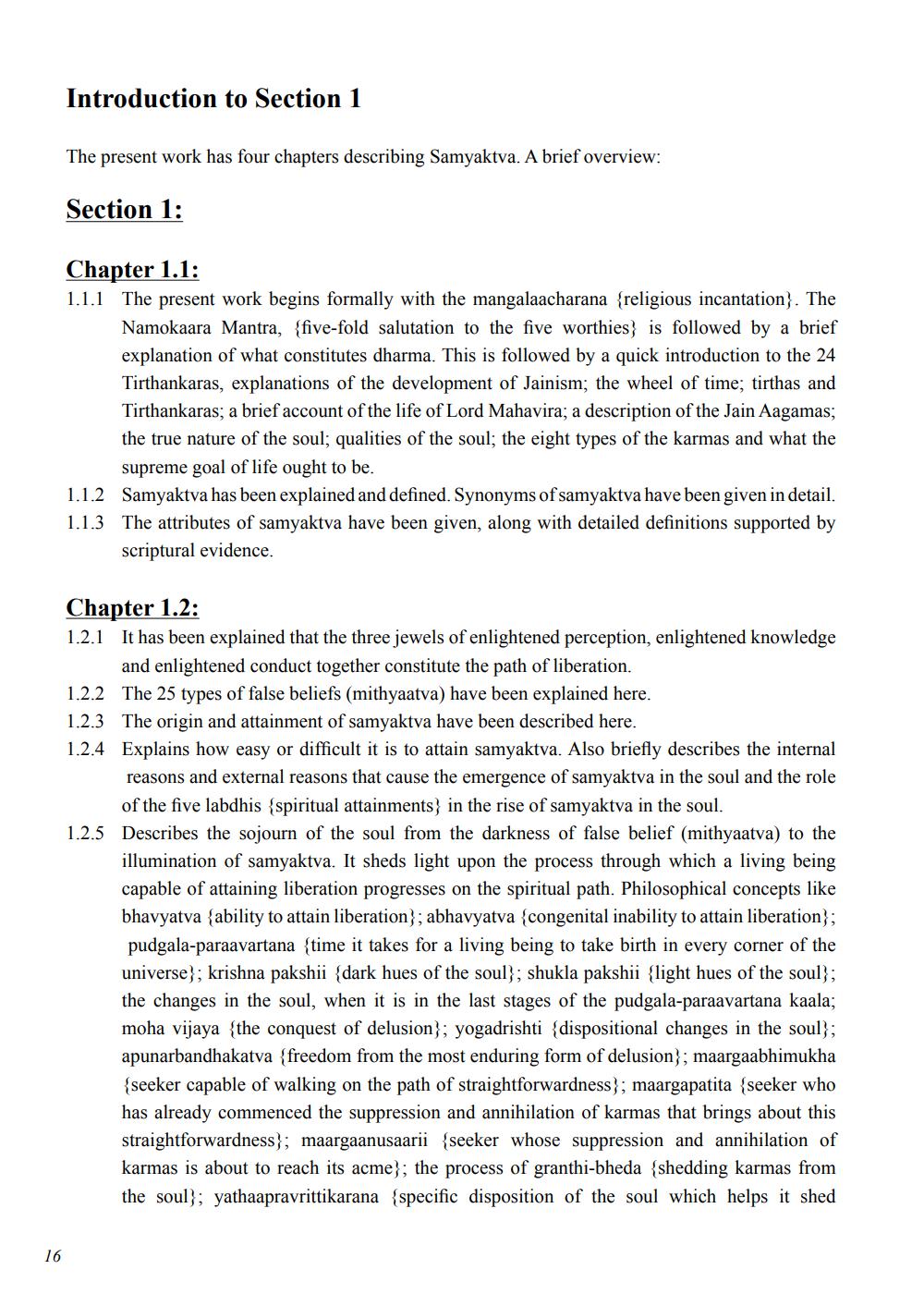________________
Introduction to Section 1
16
The present work has four chapters describing Samyaktva. A brief overview:
Section 1:
Chapter 1.1:
1.1.1 The present work begins formally with the mangalaacharana (religious incantation). The Namokaara Mantra, (five-fold salutation to the five worthies is followed by a brief explanation of what constitutes dharma. This is followed by a quick introduction to the 24 Tirthankaras, explanations of the development of Jainism; the wheel of time; tirthas and Tirthankaras; a brief account of the life of Lord Mahavira; a description of the Jain Aagamas; the true nature of the soul; qualities of the soul; the eight types of the karmas and what the supreme goal of life ought to be.
1.1.2 Samyaktva has been explained and defined. Synonyms of samyaktva have been given in detail. 1.1.3 The attributes of samyaktva have been given, along with detailed definitions supported by scriptural evidence.
Chapter 1.2:
1.2.1 It has been explained that the three jewels of enlightened perception, enlightened knowledge and enlightened conduct together constitute the path of liberation.
1.2.2 The 25 types of false beliefs (mithyaatva) have been explained here. 1.2.3 The origin and attainment of samyaktva have been described here.
1.2.4 Explains how easy or difficult it is to attain samyaktva. Also briefly describes the internal reasons and external reasons that cause the emergence of samyaktva in the soul and the role of the five labdhis (spiritual attainments) in the rise of samyaktva in the soul.
1.2.5 Describes the sojourn of the soul from the darkness of false belief (mithyaatva) to the illumination of samyaktva. It sheds light upon the process through which a living being capable of attaining liberation progresses on the spiritual path. Philosophical concepts like bhavyatva (ability to attain liberation); abhavyatva (congenital inability to attain liberation}; pudgala-paraavartana (time it takes for a living being to take birth in every corner of the universe}; krishna pakshii (dark hues of the soul;; shukla pakshii (light hues of the soul}; the changes in the soul, when it is in the last stages of the pudgala-paraavartana kaala; moha vijaya (the conquest of delusion}; yogadrishti (dispositional changes in the soul}; apunarbandhakatva {freedom from the most enduring form of delusion}; maargaabhimukha {seeker capable of walking on the path of straightforwardness); maargapatita (seeker who has already commenced the suppression and annihilation of karmas that brings about this straightforwardness}; maargaanusaarii {seeker whose suppression and annihilation of karmas is about to reach its acme); the process of granthi-bheda (shedding karmas from the soul; yathaapravrittikarana (specific disposition of the soul which helps it shed




